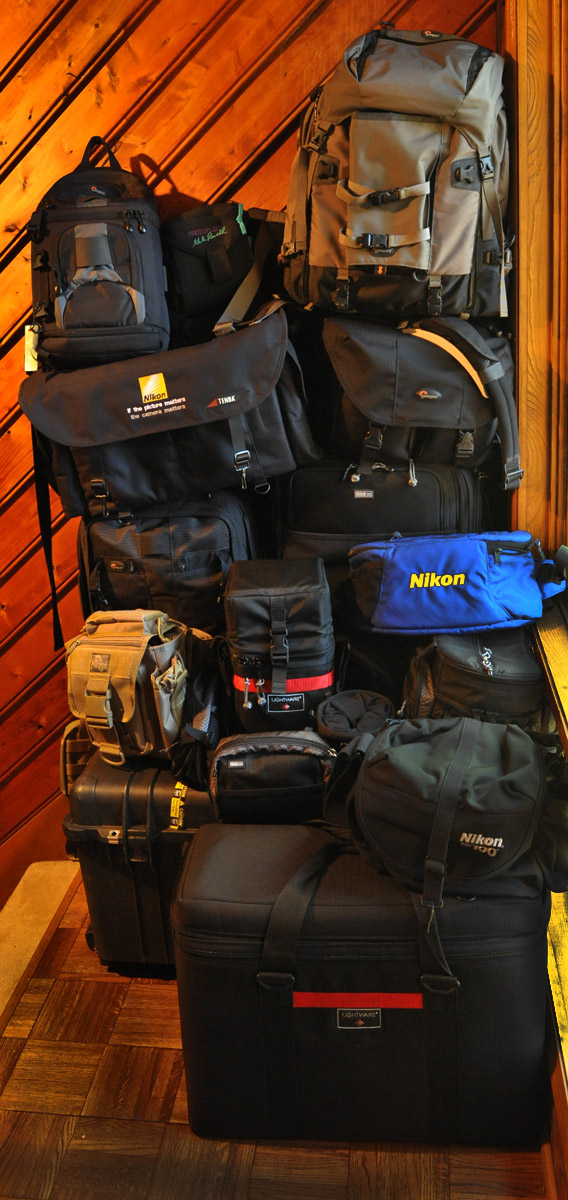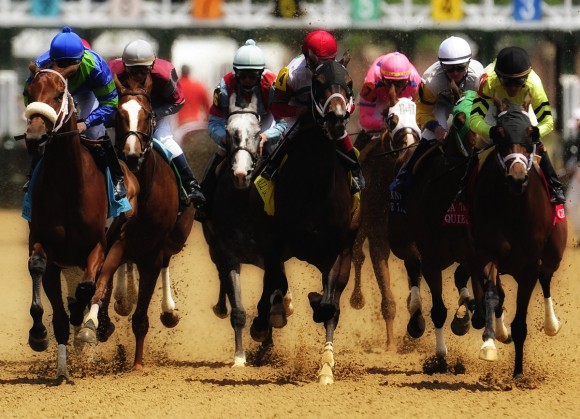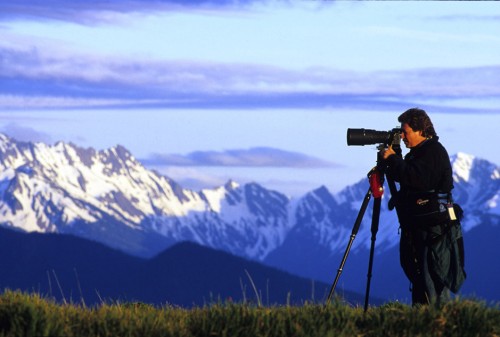Category : The Learning Center
Couldn’t resist, learning goes beyond photography….. Late this afternoon I completed my course to get a Concealed Weapons Permit in the State of Kentucky. The last step in the process is a written test, I scored a 96, and a trip to the range. I was a little nervous since I bought a Glock 23 a .40 caliber about the time I had shoulder surgery and didn’t feel it would be a good idea to try and shoot it until my shoulder healed up. I never got around to it, until today. You shoot a human size target and have to have at least 11 of 20 in the black area of the target.
They allow you to practice as long as you want before your 20 shot test begins. I put in a magazine and fired off my first 10 shots, when I looked at the target I told by instructor, “lets just make this the test”, I finished with 21 shots all in the center mass, 12 in the center circle! I did what I used to tell my football players to do when they scored a touchdown, stay cool, and act like you’ve been there before! I was more shocked than my instructor, but I didn’t let on……
I was raised in the mountains of Eastern Kentucky in Harlan County and my brother Homer was the hunter and better shot, but we used to go shooting together a lot when we were young and I remember how amazed I was at his skill with a rifle. He learned to bird hunt by letting me throw Gerber Baby Food jars over his shoulder from behind him with him shooting them on the fly in the air – with a .22 caliber rifle!!!! Wow, what a shooter. Then when he became a Dentist at Federal Prison he had to qualify at Glenco the facility in Georgia for Federal Law Enforcement Officers. Here was this 61 year old Dentist mixed in with a bunch of 20 year old eager Homeland Security folks. To there shock he hit 49 or 50 on the pistol range, 149 of 150 on the Rifle range. My wife, Sherelene, who was a Nurse Practitioner in a Federal Prison for a short time did virtually the same thing when she hit the range in Glenco. When the fire arms instructor asked her who she was an where she was from, she said, my husband is from Harlan County. He simply said, “that explains it…..” I was under a little pressure to live up to my heritage!
I’ve always loved guns, target shooting and collecting, it was a way of life back in the mountains. I don’t want to shoot anybody, I have no plans to ever raise a gun in anger or with the intent to harm someone, but our rights to own and use firearms in our society is under attack. I want to be able to legally own a gun for the protection of my family. I pray I will never shoot it anywhere but on the range. But if I ever had to, I know how.
*Photo made with my iPhone, yellow circles marking the shot placements in Keynote.
This post has 3 comments. Click here to read them
This entry was posted on Tuesday, October 4th, 2011 at 8:50 pm
You can follow any responses to this entry through the RSS 2.0 feed.
Getting ready for a trip always gets me thinking about how best to carry the load for the upcoming adventure. The image above is, sadly, only a portion, probably less than half of my camera bag collection!
For years I’ve been a bag of the month club member, meaning I’ve owned or tried almost everything anyone has ever made! I love them all, for a while, but these are the ones that have endured the test of time. Currently I have bags, packs, cases, or other carrying devices from; Lowepro, Think Tank, Lightware, Pellican, Tenba, Maxpedition, Domke, and others.
These are the ones I use most often. Why own so many bags? That is actually a really good question. For me it’s all about the right way to carry gear for the specific kind of trip. Are you flying? Are you driving? Are you hiking? Are you canoeing? How much gear are you needing to take? Once you arrive how much will you actually carry on your back or shoulder? To break it down a little, well hidden, on top of the giant Pellican case (I have 6 others as well), are a Lowepro Pro Runner X450 AW and a Think Tank Airport Security 2.0 my two favorite for getting stuff safely to my location when flying. On the top right is a tan colored Lowepro Nature Trekker 300 AW, my favorite moderate sized backpack. It’s sitting on top the Lowepro Stealth Reporter 400 AW, my favorite shoulder bag for most trips. I’ve topped it off with the Domke shoulder pad they made for the U.S. Postal Service letter carriers.
Two the left is a Tenba shoulder bag that Nikon gave me (you can see the Nikon Logo) It is great for taking show gear, but is fairly large to actually carry over the shoulder unless your younger and stronger than myself. Sitting on top the Tenba bag is one of Lowepro’s Sling bags, this one is the smaller one that is easy to throw over your shoulder with a smaller amount of gear. The very small one in the middle top that says, Galen Rowell on it, is a long since discontinued chest bag made to Galen’s specifications by Sundog, a bag manufacturer no longer in business, I just keep it in in warm memory of Galen.
Sitting directly on top of the Pellican case are, left to right, the (khaki) Maxpedition S-Type Bag, ruggedly made and perfect for one camera with a lens, a short zoom and a few accessories, I love it for walk abouts, it’s made to Mil. specs. Two the right of it is a Lightware long lens bag for my Nikkor 400mm f3.5, it is circled by my favorite belt pack unit made my Think Tank, and to the far right is the Think Tank Speed Changer side pack, topped by a Nikon fanny pack that was given away at the LA Olympics some years ago. In the front on the floor is one of many Lightware cases I use to transport safely all kinds of photo and AV gear when traveling by air or shipping UPS or Fed EX. Sitting on top the Lightware case is a small Domke shoulder bag when is ideal when you wan to carry a very small amount of gear, it is very well made of treated canvas.
For people that haven’t lost their minds, a backpack, shoulder bag, belt system, and a rolling bag for air travel should more than cover your needs. Fortunately, today we have a wealth of brands, sizes, and types of bags and cases to carry our gear. The most important questions are:
1. Is it well made and will it protect your gear?
2. Does it feel right when you carry it and can you work out of it easily?
3. When filled up can you lift it?
4. Can you afford it, or more importantly can you afford to fill it up??!!
Good luck in making your camera bag decisions. Anyone looking for a good used bag?????????
This post has 7 comments. Click here to read them
This entry was posted on Sunday, October 2nd, 2011 at 7:37 pm
You can follow any responses to this entry through the RSS 2.0 feed.
I don’t use really long lenses very much. I don’t do much sports anymore, and my big mammal wildlife days seem to be be in my rear view mirror as well. I do however love the compression effect of big lenses. I recently picked up a sweet old Nikkor 400 f 3.5 IF-ED manual focus lens for just that use.
The rule goes something like this, the longer the lens the more compression affect. I shoot the D7000 a lot and being a DX sensor camera my new 400 will be the equivalent of a 600!!! That plus the fast wide open aperture of f 3.5 make for a very exciting optic for separating the foreground from the background. This is one of my favorite techniques from the old bag of tricks. It a great way to do a visual change up while maintaining the same relative position to the subject. Another example below.
Always use your lenses to give you the visual effect your looking for. Remember telephoto glass is not just for bringing things closer in the frame. It can make a big difference in how they appear as well!!!
This post has 2 comments. Click here to read them
This entry was posted on Friday, September 30th, 2011 at 7:56 pm
You can follow any responses to this entry through the RSS 2.0 feed.
Getting ready to go on a workshop requires advanced preparation! In about 9 days I will be flying to Bangor, Maine to help lead a week long workshop and tour through out New England, ending in Acadia National Park. For this workshop to be successful I must do a number of things, and so will the participants. This is a good lesson is getting ready to do serious photography, follow along with me:
How to get ready for a workshop or serious photography trip.
1. Know the area you will be visiting. Scouting a place for photography can be done in many ways. Google has made it very easy to amass information about locations in advance. Another tool I’ve used for many years is Bob Hitchman’s wonderful, Photograph America Newsletter! Over the years Bob as pre-scouted most of the great places to shoot. You can order his newsletter or subscribe at http://www.photographamerica.com/ Of course if you’re taking an organized workshop or tour, the provider is responsible to be sure they have thoroughly scouted for you, but a little research on your own never hurts. Scouting will help you make sure you find the best spots, at the best time to make those images you hoped to make!
2. Be sure you are ready for the conditions presented by your time and location. If you are shooting Denali National Park in Alaska in fall the conditions (temps/weather/light) will be much different than Death Valley National Park in May! Knowing how to dress, what gear to carry and when the light will be best will be a huge factor in your photographic success, after all it’s hard to compose and image when you’re freezing! Gear is also important. Having enough, but not too much is a key. A 70 pound camera back pack filled with everything you own will be less productive in the field than 25 lbs. of carefully selected lenses ands accessories. In New England for instance, your 600 f4 will not be nearly as useful as it would be in Yellowstone photographing Elk. Anything that is a burden to carry will become and boat anchor if you can’t identify a strong. specific need for it. Often when walking around, less is more. Check out my article in this section: Gear For Field Work
3. Get into the mindset of what you will be photographing. Some locations like Arches National Park present you with massive, obvious photographic opportunities. Courthouse Rock is kind of hard to miss and figuring out how to capture it requires nothing much more than the right sky and the right position to shoot from. A forest of fall color like we will see in New England is quite different. Fall foliage images sin New England are a lot more about the “intimate landscape” If you get a chance, watch my teaching program on the intimate landscape on www.kelbytraining.com The intimate landscape requires a more exercised vision, looking beyond the obvious. It’s the process of “extracting” the most appealing part of the subject. For me it is a more relaxed kind of shooting, it takes time. As my dear friend and fellow photography instructor often says, “take 80% of your time searching for the subject and light, 20% of your time actually making the image……” That’s good advice, take your time, and look closely, then you will discover a wealth of great subject matter. Focus locally, instead of globally.
4. Consider and enjoy the history. This is an area where a little historical research can pay big dividends. The signicance of a church or a building, a bridge or a river adds to the photographic interests as well. In resent years I’ve become very fond of Americana subjects, old historic places, old objects, like rusted cars and trucks, farm implements, old barns and bridges, lighthouses. All subject that can be seen in abundance in a place like Vermont and New Hampshire. Don’t pass up those kinds of opportunities and when someone is around that my know the local history take the time to lean of the significance of your subject. Photography is more than capturing and image, it’s and experience, enjoy the entire process! www.history.com
5. Take time to get to know your partners in the adventure. I shared this story some time ago on this blog but it bears repeating. Years ago I interviewed the legendary football coach Paul “Bear” Bryant for a magazine. At the end of the interview I asked him what I always felt was a character revealing question, “How do you want to be remembered?” (Little did I know he would die just three months later.) Coach Bryant bowed his head and thought for long moment, when he raised it to answer, tears had welled up in his eyes. He said, “Football has been very good to me, I’ve coach many great players and coached against many great competitors worked with and played against many great coaches, I just hope I’ve been as good a friend to them as they were to me……” Paul “Bear” Bryant has learned one of life’s greatest lessons, it’s the people. In anything you do the thing of lasting value will be the wonderful friends and acquaintances. Long after the awards and accolades are forgotten the friendships will endure. Anytime you get to go into the field with other photographers, make it a goal to get to know them and enjoy their company, then whether you capture a great image or not, you will go home with somethngn even more valuable, a friend.
6. Cut yourself some slack, learning to become a great photographer is a long journey with many pitfalls along the trail. Allow yourself to not see every great shot, no one does. Have fun and immerse yourself in the great joy of making images. Celebrate the great ones, learn from the misses, and observe how those that do it better work, you will soon be standing in their spot along the trail. Always keep in mind, admire and learn from those ahead of you, and be kind and helpful to those standing where you were, a few years ago, behind you on the trail of learning! Believe it or not, the more people you help pass you on the trail the greater your joy will become……..
7. Have fun, if any activity is miserable, take up a new activity! I’ve watched many young photographers obsess over getting the great shot, so much so that they lost the joy of just being a photographer. Being a photographer, a real photographer, means you learn to see and feel deeply, experience all the suttleties of being outdoors. Feel the breeze, hear the babbling brook, hear the bird chirp, watch the grass move in the wind, feel the warmth of the sun on your face. Going to a new place, to see beautiful things in the company of great people can be one of life’s richest experiences, don’t let anything get in the way of that. If you flight is late, it won’t matter two hours later, if you drop and break a lens someone will share with you, if it rains, something will look even better wet! I know it’s an old saying but trust me, I’m a pilot, “Your attitude will determine your altitude!”
And just for the record, I don’t believe in chance, but I do believe in preparation…….
This post has 3 comments. Click here to read them
This entry was posted on Thursday, September 29th, 2011 at 12:53 pm
You can follow any responses to this entry through the RSS 2.0 feed.







